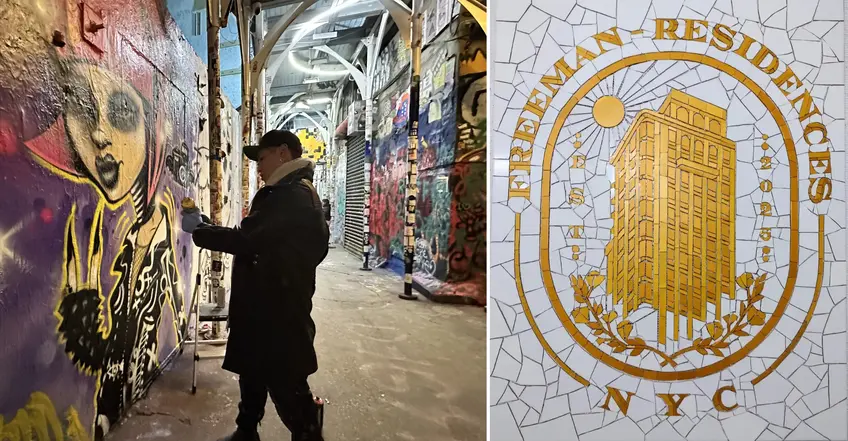 Left: Artists in Freeman Alley (Photo credit: Zui) | Right: Freeman Residences logo
Left: Artists in Freeman Alley (Photo credit: Zui) | Right: Freeman Residences logo
Tucked away in the Lower East Side, the hidden passageways, alleys, and mews of this historic neighborhood serve as remnants of New York City’s ever-evolving cultural tapestry. Among them, Freeman Alley stands as a very special living testament to the city’s street art scene—a space where political commentary, artistic expression, and urban grit collide.
The narrow, 150-foot-long dead-end off Rivington Street between Chrystie Street and the Bowery is, at first glance, a striking display of layered graffiti. But it is more than just an Instagram-friendly backdrop; it is an immersive, ever-shifting urban diary. With every visit, the alley offers something new.
In this article:
Zui, one of the alley’s two de facto curators—or, as he prefers, “facilitators”—embraces the organic nature of the space. “Freeman Alley has no hierarchy,” he says. “No one artist monopolizes a spot due to the rotating nature of the space. It’s an open environment that, like a garden, grows naturally.” Zui oversees the back half of the alley, while the street artist, Vewer, takes the lead at the front.
The distinction between street artists, muralists, and vandals is a nuanced one, particularly in a space like Freeman Alley. “Graffiti has a warrior sense to it,” Zui explains. “These artists stand by their name and their neighborhood.”
Jayo V, a graffiti artist based in both Philadelphia and Los Angeles, contributed the most recent piece to the alley, “So much art lives in this one hidden alley from artists all over the world,” he says. “It’s a hub for creativity and inspiration.” Jayo’s tagline, “Be Ferocious” sits under the iconic tiger with his tag line.
Like many of New York’s hidden passageways, Freeman Alley has a layered history. Originally established for stable access and drainage, its name is the subject of debate—some believe it honors Uzal Freeman, a 19th-century surveyor, while others trace it to the nearby Second African Burial Ground. In the 19th century, alleys such as Freeman were common throughout the tenement landscape, often doubling as service entrances or sites of more clandestine activities.
Few know the alley’s history as intimately as Jimmy Wright, a visual artist whose works are housed in both The Met and The Whitney. Wright, who moved into 1 Freeman Alley in 1980—when Rivington Street was a hub for heroin sales—remains the alley’s only resident and its unofficial historian. “It was so bad that the post office refused to deliver here because of the drug traffic,” he recalls.
Despite his long residence on the alley, Wright strives not to fight the inevitable change time brings but, like Zui, facilitates it in a way that keeps the soul of Freeman Alley intact. To that end, Wright recently challenged the New Museum, which backs up onto the alley.
The New Museum's addition, designed by OMA / Shohei Shigematsu and Rem Koolhaas in collaboration with Cooper Robertson, will open in fall 2025, adding 60,000 square feet of exhibition space including their new restaurant Aesthetic Matters. As the restaurant will have a door onto Freeman Alley, Wright challenged the city and museum to consider how the function of this door will affect the alley.
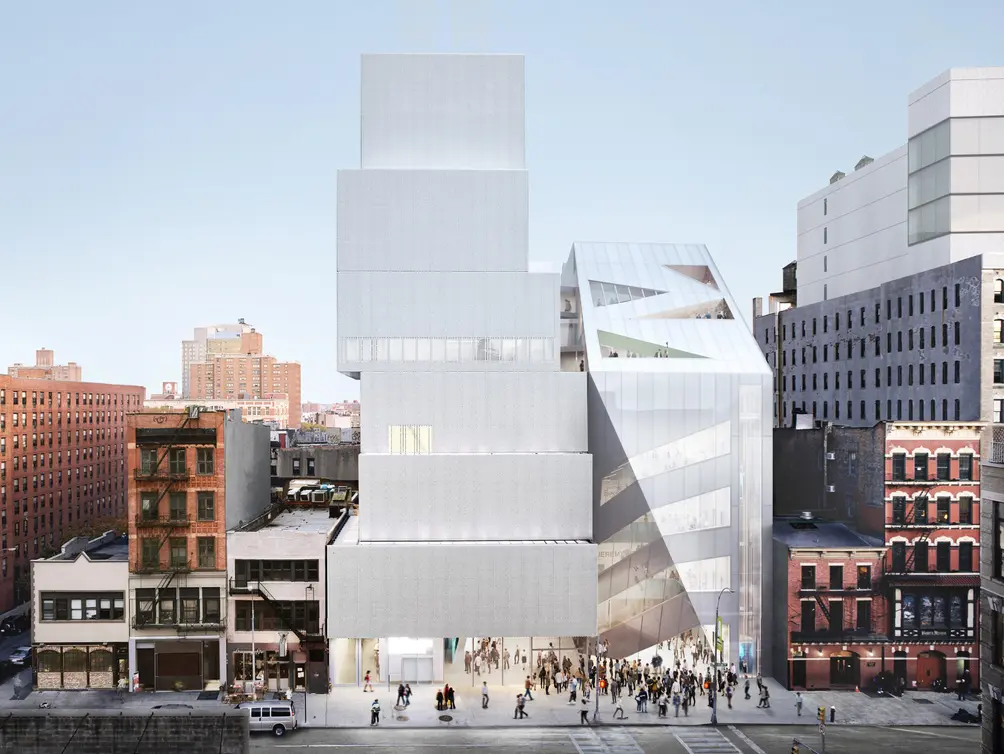 Rendering of the expanded New Museum at 235 Bowery. OMA/bloomimages.de
Rendering of the expanded New Museum at 235 Bowery. OMA/bloomimages.de
Freeman Alley: New York's past, present, and future
A former coffin factory and a back entrance to the Bowery Mission, Freeman Alley once served as a gathering point for those in need. As Ephemeral New York notes, the mission’s breadline would snake through the alley, offering a stark contrast to its contemporary role as a canvas for global street artists.
Yet, as is often the case in New York, change looms. The Lower East Side’s transformation has been swift—in 1983, the neighborhood was home to just 25 art galleries; by 2016, that number had swelled to 224. Freemans Restaurant, a mainstay at the alley’s end since 2004, was among the first to capitalize on the area’s artsy allure (and is still going strong today).
Yet, as is often the case in New York, change looms. The Lower East Side’s transformation has been swift—in 1983, the neighborhood was home to just 25 art galleries; by 2016, that number had swelled to 224. Freemans Restaurant, a mainstay at the alley’s end since 2004, was among the first to capitalize on the area’s artsy allure (and is still going strong today).
In 2023, Gadi Peleg, founder of GPG Hospitality, opened boutique hotel Untitled at 3 Freeman Alley (with its in-house tattoo studio, Unscripted Ink), in the former Ace Hotel/Sister City space. “The alley is so much of the inspiration and thought behind the hotel,” Peleg told WWD. “There’s legitimacy to the alley. It is really a part of New York and the city’s history in a way that is not touristy at all.”
Not everyone shares Peleg’s optimism. Some fear commercialization could threaten Freeman Alley’s ephemeral, anarchic spirit. In 2014, Chanel used it as a backdrop for a Baz Luhrmann-directed advertisement starring Gisele Bündchen. In 2022, H&M hosted an event there. Most recently, towering over the alley’s gritty charm, a new 17-story luxury residential building at 4 Freeman Alley/185 Chrystie Street is reshaping the landscape.
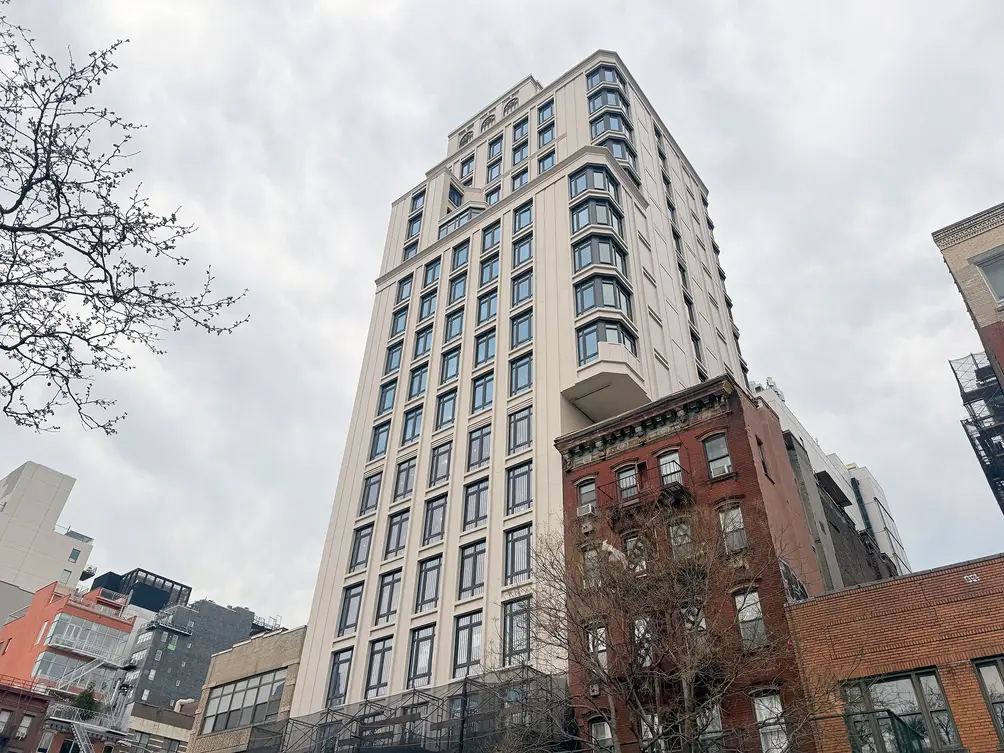 Freeman Residences at 183 Chrystie Street in April 2025 (CityRealty)
Freeman Residences at 183 Chrystie Street in April 2025 (CityRealty)
Would you like to tour any of these properties?
Just complete the info below.
Or call us at (212) 755-5544
Although Freeman Residences has the address of 4 Freeman Alley, its main entrance will be on Chrystie Street. Only six of the building’s units, their poshest penthouses, have exclusive access to the alley. At 17 stories tall, the building will tower above the rest of the low-rise neighborhood offering unparalleled views. The building boasts “Exclusive Local Partnerships” by offering condo owners priority access to morning continental breakfast; convenience shop and scooter rental; and rooftop and private bookings. The 175-foot-tall mixed-use development will have just under 2,000 and a 30-foot-long rear yard, which could be used for a variety of commercial uses.
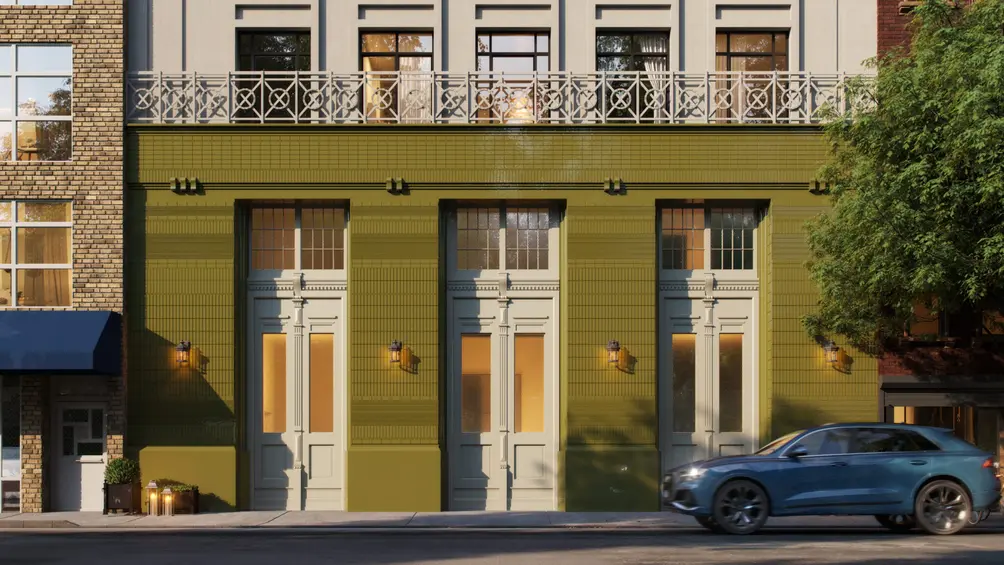 Freeman Residences' primary entrance on Chrystie Street
Freeman Residences' primary entrance on Chrystie Street
 Rendering of Freeman Residences interior (Omnia Properties)
Rendering of Freeman Residences interior (Omnia Properties)
Additionally, Untitled Hotel has filed a permit to reopen a restaurant (which closed when Sister City shuttered during Covid) so there is a lot looming in the alley’s future.
Wright believes big changes are coming as the alley’s future as the local retail clientele goes more upscale. But, as Zui observes, “It’s an ephemeral ecosystem. If you try to control it, it will never be what you imagine.” So, like the city itself, Freeman Alley continues to evolve—one layer of paint at a time.
Other alley evolutions
Extra Place, Lower East Side
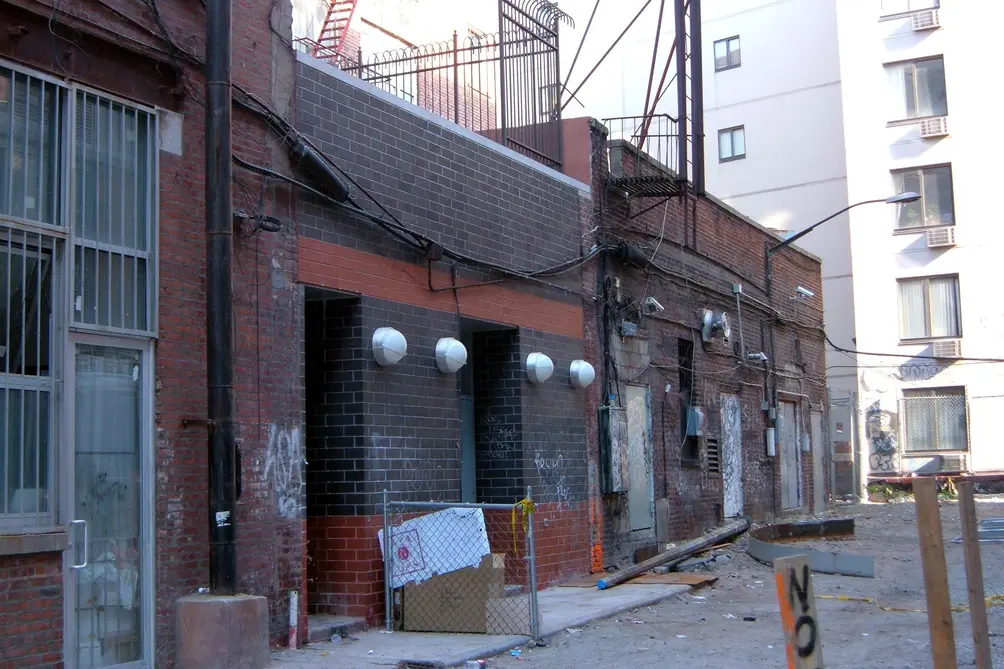 Extra Place, 1970s (Larry Gertner of New York, New York | http://www.hmdb.org/marker.asp?marker=136888)
Extra Place, 1970s (Larry Gertner of New York, New York | http://www.hmdb.org/marker.asp?marker=136888)
Located just off the Bowery near East 1st Street, Extra Place was originally a service alley for CBGB and became associated with the punk rock scene in the 1970s. Performers would hang out in the alley between sets. In 2006, the buildings to the right of Extra Place were demolished to build Avalon Bowery Place. By 2009, Extra Place was paved and retailers moved in, including Bespoke Chocolates and Montana Knox Apparel.
Great Jones Alley, Noho
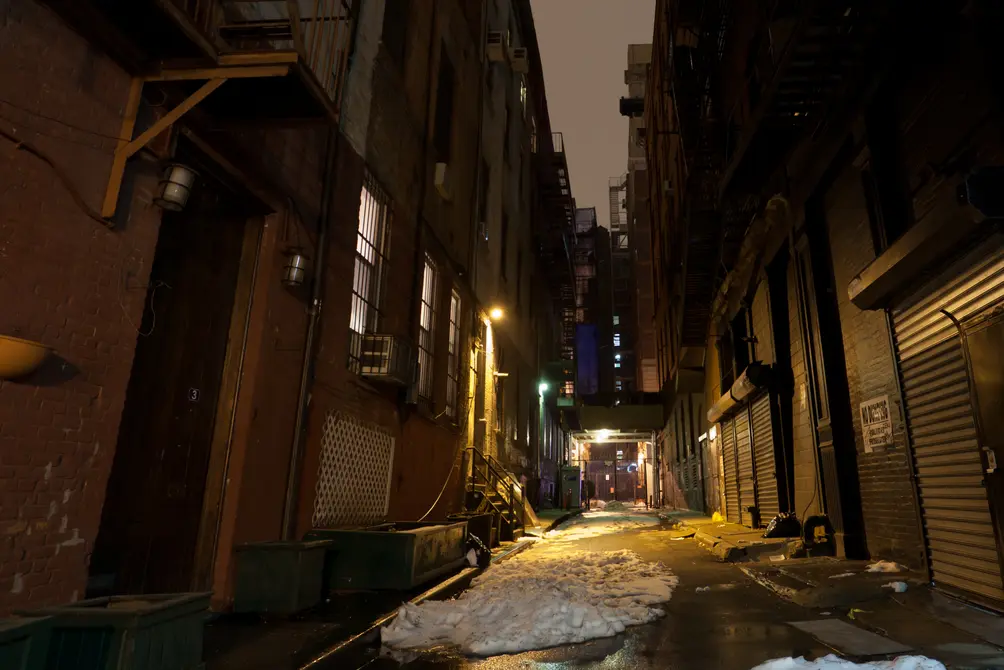 Great Jones Alley in 2011 by Jens Schott Knudsen | https://www.flickr.com/photos/pamhule/5349564164/
Great Jones Alley in 2011 by Jens Schott Knudsen | https://www.flickr.com/photos/pamhule/5349564164/
According to Media History New York, “There is also an alleyway, a rare sight in New York City, on the block between Broadway and Lafayette. The alley is called Great Jones Alley and was once a meeting place for drug addicts and dealers. ‘Jonesin,’ the term referring to an intense craving for drugs, was coined by junkies in the alley.” Today, the alley is home to super luxe residences like 1 Great Jones Alley, a boutique condominium design by BKSK Architects with a penthouse that sold for over $20 million in 2018.
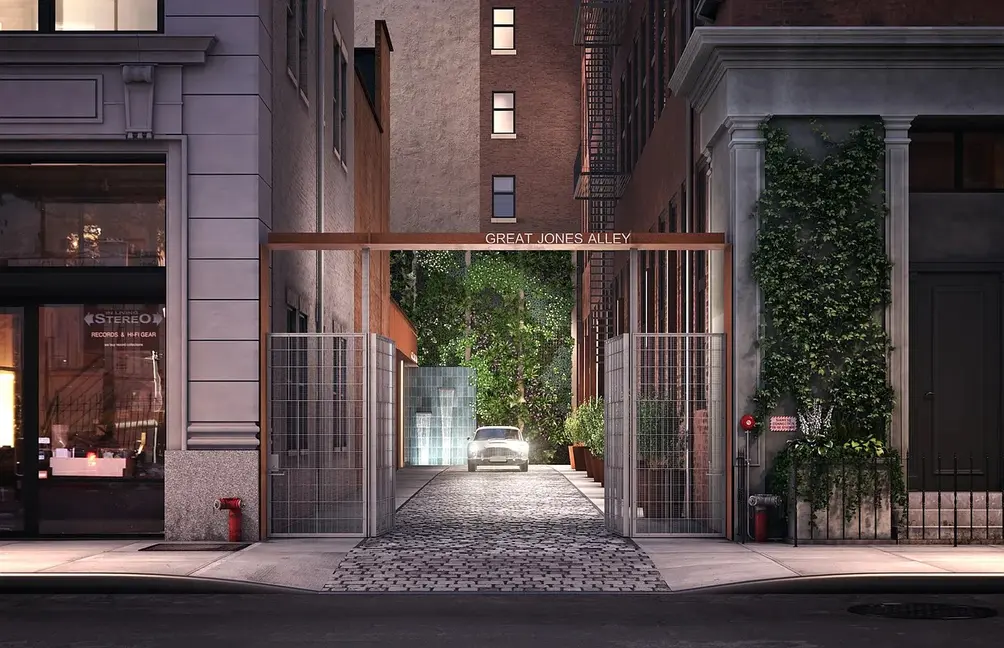
Cortlandt Alley, Tribeca
The Commissioners' Plan of 1811 laid out a rigid grid of 155 streets and 12 avenues to maximize real estate, intentionally omitting alleys. Backed by eminent domain, the city demolished around 40% of existing buildings to implement the plan. As compensation, landowners were allowed to build more units on uninterrupted plots, boosting profits. Frequently used in films for gritty crime scenes, crews often enhance its menacing feel by adding fake grime, trash, and graffiti.
Grove Alley, Downtown Brooklyn
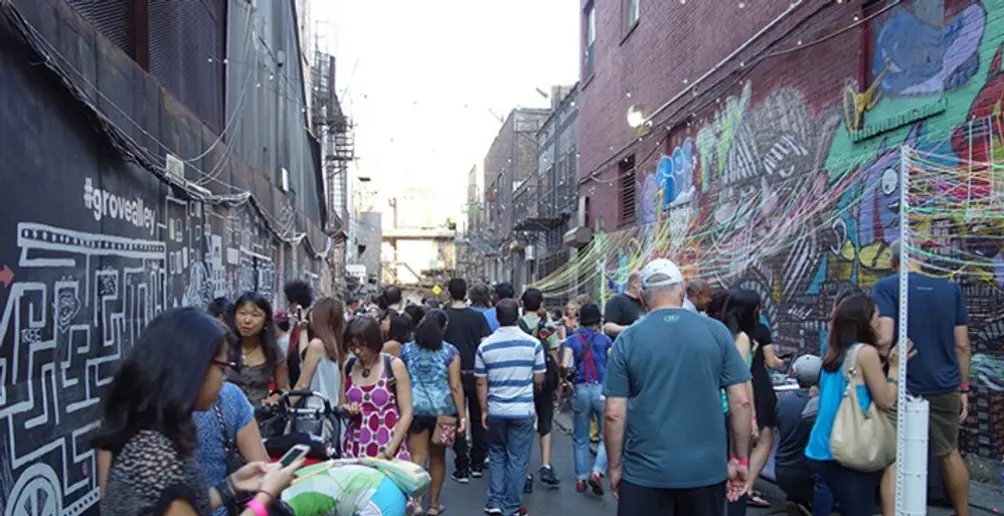 Credit: Downtown Brooklyn Partnership
Credit: Downtown Brooklyn Partnership
In 1999, Forgotten New York had this to say about Grove Alley: “Functioning as a depository for the garbage of both Fulton Street and Livingston Street in Brooklyn’s busy downtown shopping district, Grove Place, a dead end on equally obscure Hanover Place, is a candidate for the worst street in Brooklyn, if not the five boroughs.” Not anymore: In 2013, Katie Lyon of the Downtown Brooklyn Partnership conceived of The Nite Market, an open air market selling everything from food to underwear. The Grove Alley Nite Market’s paint nites, musical performances, and culinary experiences transformed the worst street into one of the best.
Would you like to tour any of these properties?
Just complete the info below.
Or call us at (212) 755-5544
Would you like to tour any of these properties?
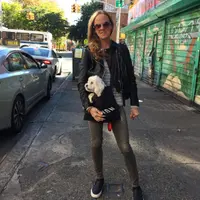
Contributing Writer
Michelle Sinclair Colman
Michelle writes children's books and also writes articles about architecture, design and real estate. Those two passions came together in Michelle's first children's book, "Urban Babies Wear Black." Michelle has a Master's degree in Sociology from the University of Minnesota and a Master's degree in the Cities Program from the London School of Economics.

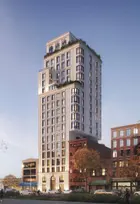
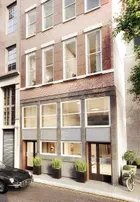
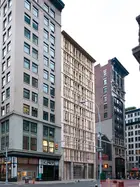
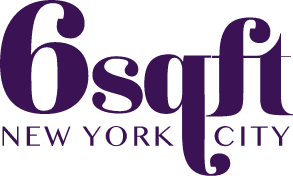 6sqft delivers the latest on real estate, architecture, and design, straight from New York City.
6sqft delivers the latest on real estate, architecture, and design, straight from New York City.
